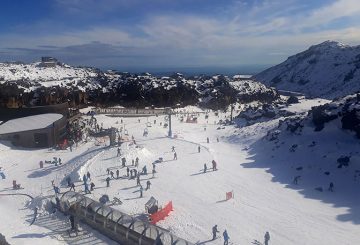정부가 의약품 구매 대행업체인 Pharmac에 사상 최대 규모의 예산을 편성했습니다.데이비드 시모어 (David Seymour) 보건부 차관에 따르면 향후 4년 동안 약 63억 달러가 지출될 것이라고 합니다.이 새 예산은 이전 노동당 정부가 남긴 17억 달러의 부족분을 해결합니다.
이전 정부는 Pharmac에 연간 1억 8천만 달러를 할당했지만, 이 기관의 예산을 유지하는 데 드는 실제 비용은 연간 4억 달러가 넘습니다.이러한 자금 부족으로 인해 Pharmac은 특정 의약품을 목록에서 삭제함으로써 뉴질랜드 국민들의 필수 의료 서비스 이용이 제한될 위험이 있었습니다.
Pharmac의 자금 지원 모델을 개혁하려는 계획은 ACT와 National 간의 연합 협약의 일부입니다.뉴질랜드 퍼스트와 내셔널은 매년 Pharmac의 자금 지원을 늘리기로 합의했습니다.선거 운동 기간 동안 노동당 지도자 크리스 힙킨스 (Chris Hipkins) 는 자신의 임기 동안 Pharmac의 자금 지원이 연간 12억 달러로 증가했다고 주장했습니다.
그러나 현재 Pharmac의 위시리스트에는 자금 지원을 원하지만 예산 제약으로 인해 지원하지 못하는 치료제가 130개 이상 있습니다.지난 8월, 암 의사들은 뉴질랜드가 세계보건기구 (WHO) 의 필수 의약품 목록을 거의 따라가지 못하고 있다는 내용의 공개 서한을 파맥 (Pharmac) 에 보내 새로운 약물에 대한 자금 지원을 개선해 줄 것을 요청했습니다.
Seymour는 의약품 자금 지원은 일부 뉴질랜드 사람들의 삶과 죽음의 문제라고 강조했습니다.그는 모든 뉴질랜드 국민이 필요한 의약품을 이용할 수 있도록 정부가 17억 7,400만 달러를 추가로 확보하기 위해 최선을 다하고 있다고 말했습니다.
시모어는 슈도에페드린 감기약 및 독감 치료제의 반환, Pharmac의 승인 절차 간소화와 같은 다른 이니셔티브에 대해서도 언급했습니다.그는 폴라 베넷 전 부총리가 다음 달 파맥 이사회 의장이 될 것이라고 발표했습니다.이전 의장이었던 스티브 마하레이는 12월에 사임했습니다.






























































